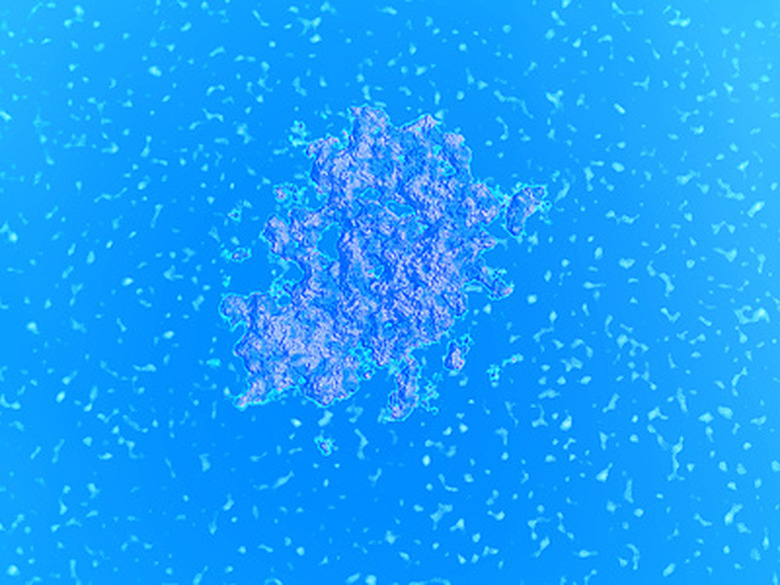What Are The General Characteristics Of Monerans?
Monerans are members of the kingdom Monera, which includes organisms more often called prokaryotes; the two terms are interchangeable. ("Kingdom" is the top level of classification in standard taxonomy.) All living thing are taxonomically classified as belonging to one of five kingdoms, with the other four being Protista, Animalia, Plantae and Fungi. These other kingdoms are populated entirely by eukaryotes.
The overwhelming fraction of prokaryotes are bacteria. The only exception are blue-green algae, which are properly called cyanobacteria ("regular" bacteria are known as archeobacteria). The essential features of Monera include being unicellular, microscopic, and lacking a nucleus or other membrane-bound organelles such as mitochondria.
The Five Kingdoms of Life
The Five Kingdoms of Life
Monera, which includes the oldest kinds of living thing on Earth, includes about 10,000 species despite the startling simplicity of every organism in the kingdom. Protista, the protist kingdom, boasts about 250,000 species and includes single-celled protozoans and some algae species. Plantae, the plant kingdom, also features about 250,000 species of organisms that make their own food. Fungi has approximately 100,000 species and are almost all multicellular. Animalia, the animal kingdom, includes roughly a million different species with cells that lack walls and photosynthetic pigment.
Characteristics of Monera
Characteristics of Monera
Prokaryotes are very tiny, single-celled organisms. These cells' DNA (deoxyribonucleic acid) is not enclosed in a nucleus, instead sitting in a loose assembly in the cytoplasm called the nuceloid. This DNA is in the form of a single circular chromosome. The cells contain no organelles or specialized membrane-bound structures, such as the endoplasmic reticulum, Golgi bodies and mitochondria found in eukaryotic cells. They do contain ribosomes, structures made out of RNA (ribonucleic acid) and proteins that synthesize new proteins. They reproduce by a process called binary fission, which essentially means splitting in two to make two cells identical to each other as well as the parent. These cells have walls, unlike animal cells.
Cilia and flagella are whip-like structures projecting outside the cell wall that give some members of Monera locomotion.
Prokaryote Metabolism
Prokaryote Metabolism
Because prokaryotic organisms are unicellular, with relatively modest and fixed energy needs, they have not evolved to carry out the processes that add up to aerobic respiration, which is common to eukaryotes. Instead, they rely almost entirely on glycolysis, the breakdown of the six-carbon sugar glucose, for their metabolic needs. This glucose can come from the breakdown of carbohydrates, proteins and fats. Some bacteria derive their carbon from carbon dioxide, but every kind of pathogenic (disease-causing) bacteria is heterotrophic, meaning that they get their food, in this case nitrogen (needed for protein synthesis), from both organic and inorganic sources.
Cite This Article
MLA
Beck, Kevin. "What Are The General Characteristics Of Monerans?" sciencing.com, https://www.sciencing.com/general-characteristics-monerans-6506178/. 28 September 2018.
APA
Beck, Kevin. (2018, September 28). What Are The General Characteristics Of Monerans?. sciencing.com. Retrieved from https://www.sciencing.com/general-characteristics-monerans-6506178/
Chicago
Beck, Kevin. What Are The General Characteristics Of Monerans? last modified August 30, 2022. https://www.sciencing.com/general-characteristics-monerans-6506178/
